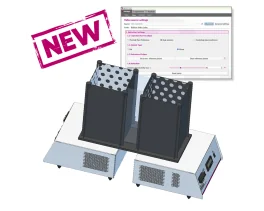Authors
L. Daulhac, C. Mallet, C. Courteix, M. Etienne, E. Duroux et al.
Lab
Institut National de la Santé et de la Recherche Médicale U766, Facultés de Médecine et de Pharmacie, Clermont-Ferrand, France ; Laboratoire de Pharmacologie, Faculté de Pharmacie and Laboratoire de Pharmacologie Médicale , Faculté de Médecine, Universit
Journal
Molecular Pharmacology
Abstract
Molecular mechanisms underlying diabetes-induced painful neuropathy are poorly understood. We have demonstrated, in rats with streptozotocin-induced diabetes, that mechanical hyperalgesia, a common symptom of diabetic neuropathy, was correlated with an early increase in extracellular signal-regulated protein kinase (ERK), p38, and c-Jun N-terminal kinase (JNK) phosphorylation in the spinal cord and dorsal root ganglion at 3 weeks after induction of diabetes. This change was specific to hyperalgesia because nonhyperalgesic rats failed to have such an increase. Immunoblot analysis showed no variation of protein levels, suggesting a post-translational regulation of the corresponding kinases. In diabetic hyperalgesic rats, immunocytochemistry revealed that all phosphorylated mitogen-activated protein kinases (MAPKs) colocalized with both the neuronal (NeuN) and microglial (OX42) cell-specific markers but not with the astrocyte marker [glial fibrillary acidic protein (GFAP)] in the superficial dorsal horn-laminae of the spinal cord. In these same rats, a 7-day administration [5 _g/rat/day, intrathecal (i.t.)] of 1,4-diamino-2,3-dicyano-1,4-bis(2-aminophenylthio)butadiene (U0126), 4-(4-fluorophenyl)-2-(4-methylsulfinylphenyl)-5-(4-pyridyl)1H-imidazole (SB203580), and anthra(1,9-cd)pyrazol-6(2H)-one (SP600125), which inhibited MAPK kinase, p38, and JNK, respectively, suppressed mechanical hyperalgesia, and decreased phosphorylation of the kinases. To characterize the cellular events upstream of MAPKs, we have examined the role of the NMDA receptor known to be implicated in pain hypersensitivity. The prolonged blockade of this receptor during 7 days by (5R, 10S)-(+)-5-methyl-10, 11-dihydro-5H-dibenzo[a,d]-cyclohepten-5-10-imine hydrogen maleate (MK801; 5 _g/rat/day, i.t.), a noncompetitive NMDA receptor antagonist, reversed hyperalgesia developed by diabetic rats and blocked phosphorylation of all MAPKs. These results demonstrate for the first time that NMDA receptor-dependent phosphorylation of MAPKs in spinal cord neurons and microglia contribute to the establishment and longterm maintenance of painful diabetic hyperalgesia and that these kinases represent potential targets for pain therapy.
Source :

 Pain - Thermal Allodynia / Hyperalgesia
Pain - Thermal Allodynia / Hyperalgesia Pain - Spontaneous Pain - Postural Deficit
Pain - Spontaneous Pain - Postural Deficit Pain - Mechanical Allodynia / Hyperalgesia
Pain - Mechanical Allodynia / Hyperalgesia Learning/Memory - Attention - Addiction
Learning/Memory - Attention - Addiction Physiology & Respiratory Research
Physiology & Respiratory Research











![Dynamic Weight Bearing 2.0 – Postural Module [Add-on]](https://bioseb.com/733-home_default/dynamic-weight-bearing-20-add-on-postural-module.jpg)
























 Pain
Pain Central Nervous System (CNS)
Central Nervous System (CNS) Neurodegeneration
Neurodegeneration Sensory system
Sensory system Motor control
Motor control Mood Disorders
Mood Disorders Other disorders
Other disorders Muscular system
Muscular system Joints
Joints Metabolism
Metabolism Cross-disciplinary subjects
Cross-disciplinary subjects CONFERENCES & MEETINGS
CONFERENCES & MEETINGS